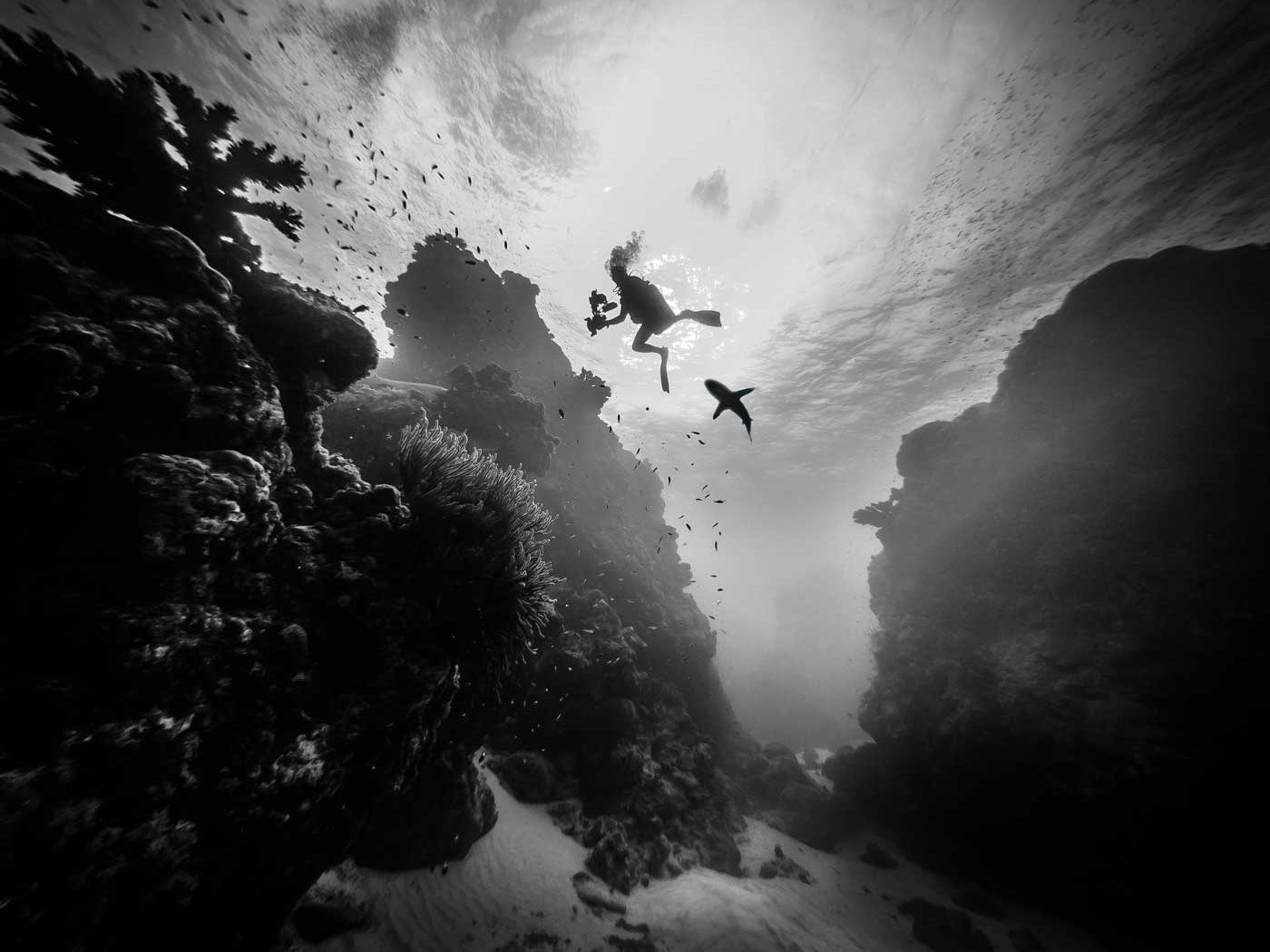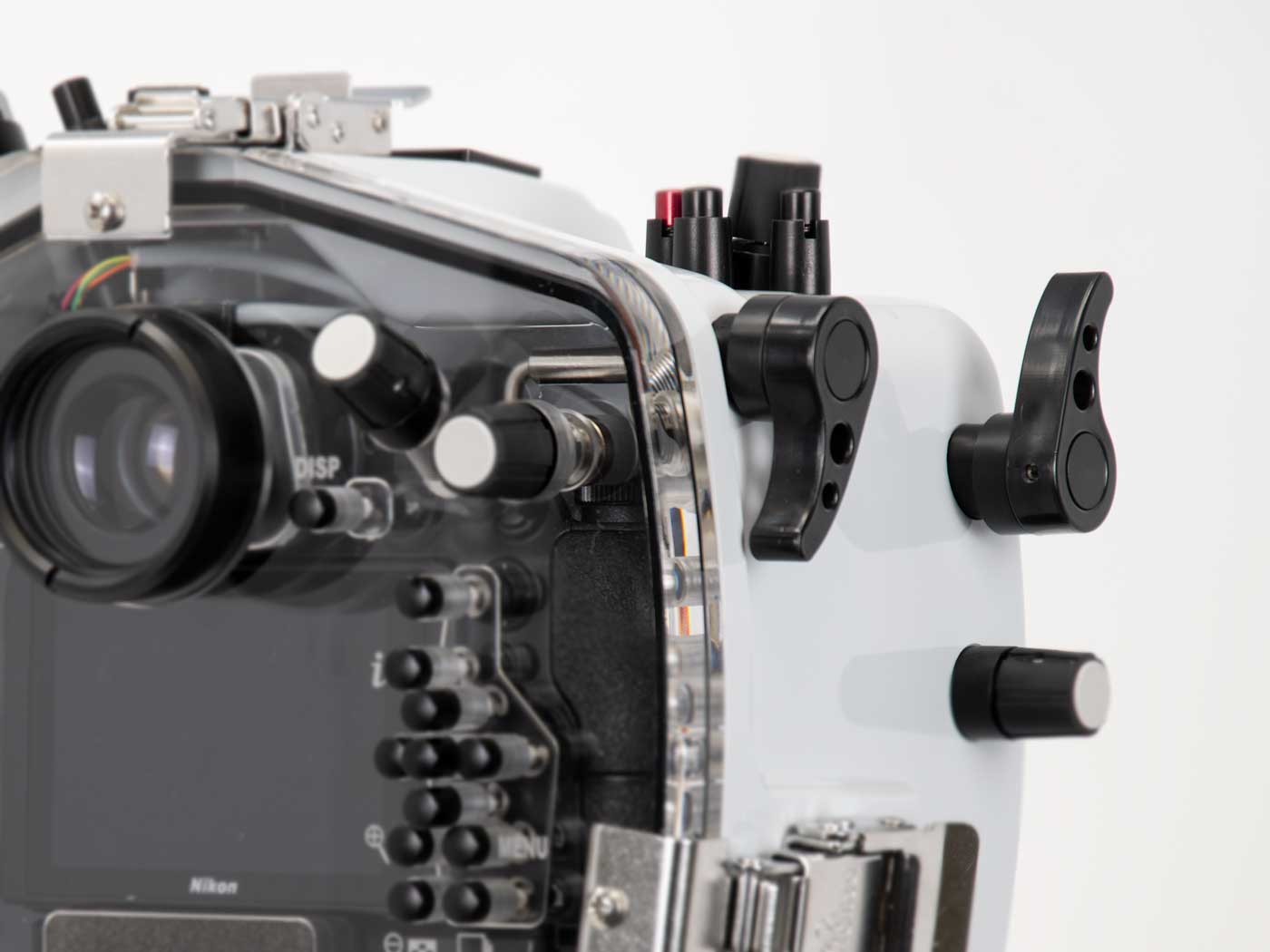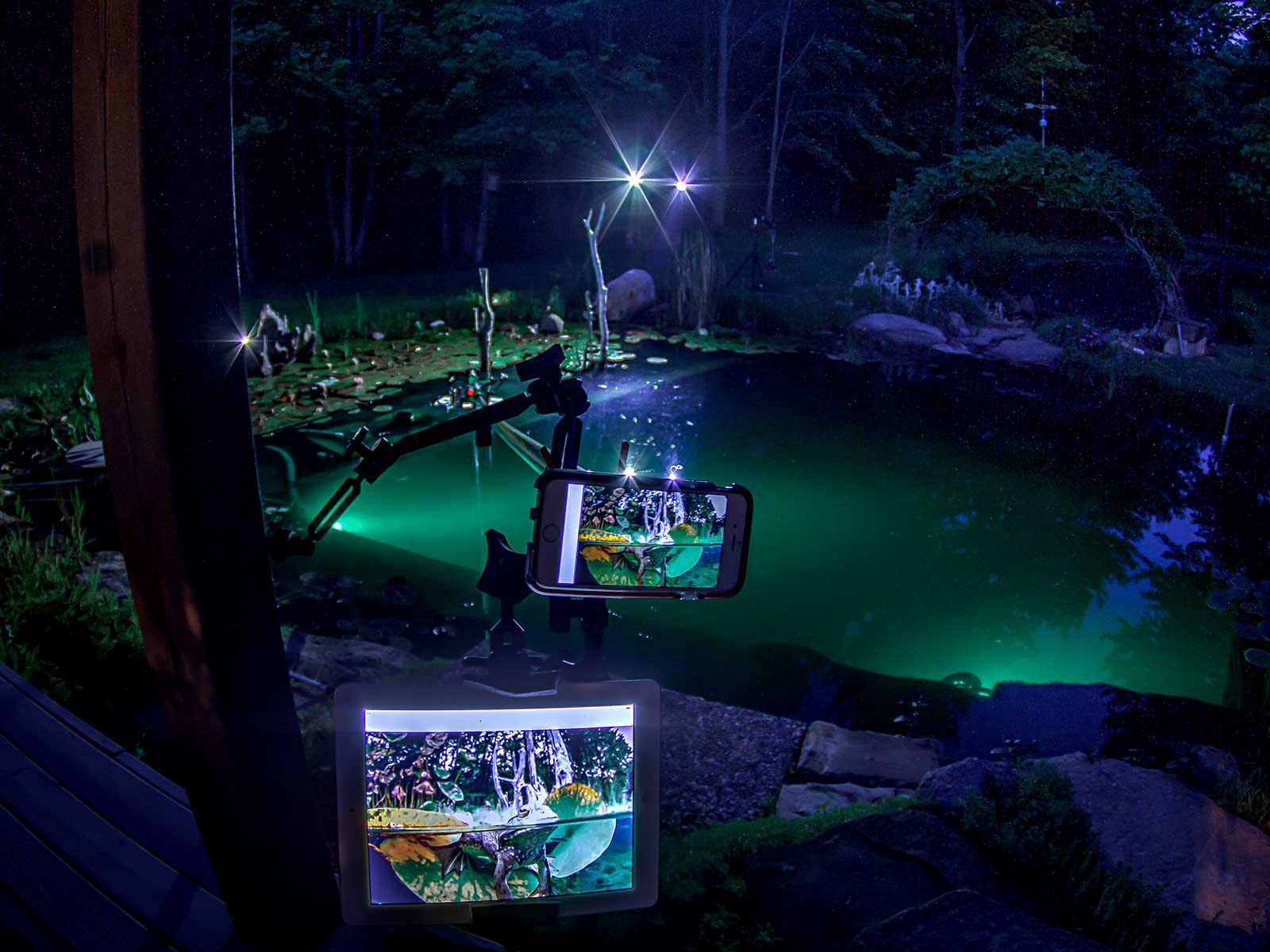By Ambassador Steve Miller
It’s a bold choice to remove the hues and vibrant colors in our underwater photography in favor of grey shades, but black and white (B&W) images can convey a timeless and artistic message more effectively than their colorful counterparts...sometimes.

A black and white conversion can be used to highlight the light rays hitting your subject. Mantas have little color to begin with, so a black and white can also be used to accentuate the animal's unique pattern.
Most photographers have some monotone work in their portfolios, but very few actually set out specifically to compose, and shoot for the black and white image. I have yet to see someone calibrate their camera's viewfinder to see in black and white. And yet, the technique is wide spread for at least three reasons.
#1 Why not?
The first is because it is so easy to try and compare. One click in Adobe® Lightroom or most photo apps will instantly convert a color to B&W image. From there, all of your sliders work, although the color channels and hue controls will become interesting.

This is the only image in this collection that can go either way. These are the kind of images that you post on social media and ask your friends & followers to comment which one they like better.
#2 Variety
The second is to mix it up. You just shot a pod of dolphins, or a shark dive, and have returned with hundreds of images. There are at least a dozen you love, but they are repetitious. Black and white conversion to the rescue!

Seen one, seen 'em all? Reducing the saturation of or completely desaturating some images can make a gallery of the same subject look less monotonous. Simple compositions that suggest interaction are conveyed more directly when you use selective color and contrast.
#3 The Big Fix
The third reason is more interesting. Black and White can “save” some images from critical issues that kind of go away with the conversion to B&W: backscatter, lack of strobe light, over/under exposure, and more.

Black and white conversion can help to mask major flaws in your image. Backscatter and low visibility are camouflaged here with contrast tools.
When we think of the B&W images, we think of contrasts: deep blacks, pure whites, and shades of grey that show light and dark without distracting hues.
Water absorbs light, making lack of contrast a challenge for almost every underwater image. Generally speaking, contrast is directly proportionate to the visibility. The reduction in contrast in moving from 2 feet away to 5 feet away from your subject underwater is huge. This separation often leaves us shooting monochrome; the only difference is we have shades of blue or green instead of gray.

When you're more than 10 feet from your subject and shooting natural light, you won't come back with much contrast in your image and there simply isn't any color to bring out. Desaturating and then boosting contrast and clarity can reveal a stunning result.
Unfortunately you can't bring back color that isn't in your photo. Overworking the colors of a blue or green cast image can make it a lot worse. But once you have jumped into the B&W module of editing your image, the normal concerns of color casts no longer work the same way. You can increase things like sharpness, contrast, clarity, and dehaze in ways that simply wouldn’t work with a color image.
In particular your color channels will behave differently. For example, in a blue cast natural light image, moving the blue color channel slider to the right will brighten your water column toward white.

The blue slider in color channels can be used to brighten your water column once the image is converted to black and white.
Severe edits- where there is lots of backscatter in the frame, over exposed highlights, underexposed areas- they can all take on a perspective that works with the image. Sometimes simplifying an overly busy scene by reducing it to a few tonal shades can make your image stronger. Sometimes you may have an image with amazing composition that is just a mess with scatter, highlights and shadows- these are likely candidates for B&W conversion.

The Florida springs aren't always crystal clear after the sun has come up and the tour groups have arrived. Black and white can mask visibility issues and emphasize the important most components of a composition.
Keep in mind that you simply reduce the saturation of an image to give it a black and white feel to it, while maintaining a cast. Or you can get creative and use layers to mix black and white and color within the same image.

This is an artistic composite of two photos, with the moon in black and white and the sharks emphasized with color.
These 3 reasons have been the root of most of the black and white conversions that I have done over the years. And to be honest, they are all lousy reasons. To truly embrace this as a technique for the underwater shooter is too bold for me I suppose... and a lot of other photographers. If you have the time, compare the western landscape images of Ansel Adams in black and white to the amazing contemporary photographer Peter Lik. You may notice a contrast of vibrant colors to rich blacks and pure whites that makes you think… maybe I should actually try shooting black and white instead of using it as a toolbox item to hide the flaws in my images.

Not every photo needs to be black and white as an afterthought. Inky black water at night made this essentially monotone without conversion.
 Ambassador Steve Miller has been a passionate teacher of underwater photography since 1980. In addition to creating aspirational photos as an ambassador, he leads the Ikelite Photo School, conducts equipment testing, contributes content and photography, represents us at dive shows and events, provides one-on-one photo advice to customers, and participates in product research and development. Steve also works as a Guest Experience Manager for the Wakatobi Dive Resort in Indonesia. In his "free" time he busies himself tweaking his very own Backyard Underwater Photo Studio which he's built for testing equipment and techniques. Read more...
Ambassador Steve Miller has been a passionate teacher of underwater photography since 1980. In addition to creating aspirational photos as an ambassador, he leads the Ikelite Photo School, conducts equipment testing, contributes content and photography, represents us at dive shows and events, provides one-on-one photo advice to customers, and participates in product research and development. Steve also works as a Guest Experience Manager for the Wakatobi Dive Resort in Indonesia. In his "free" time he busies himself tweaking his very own Backyard Underwater Photo Studio which he's built for testing equipment and techniques. Read more...
Additional Reading
Natural Light Photography Underwater
Getting it Sharp: Back Button Focus and Post Processing Workflow
Fluorescence and Luminance Underwater Photography













